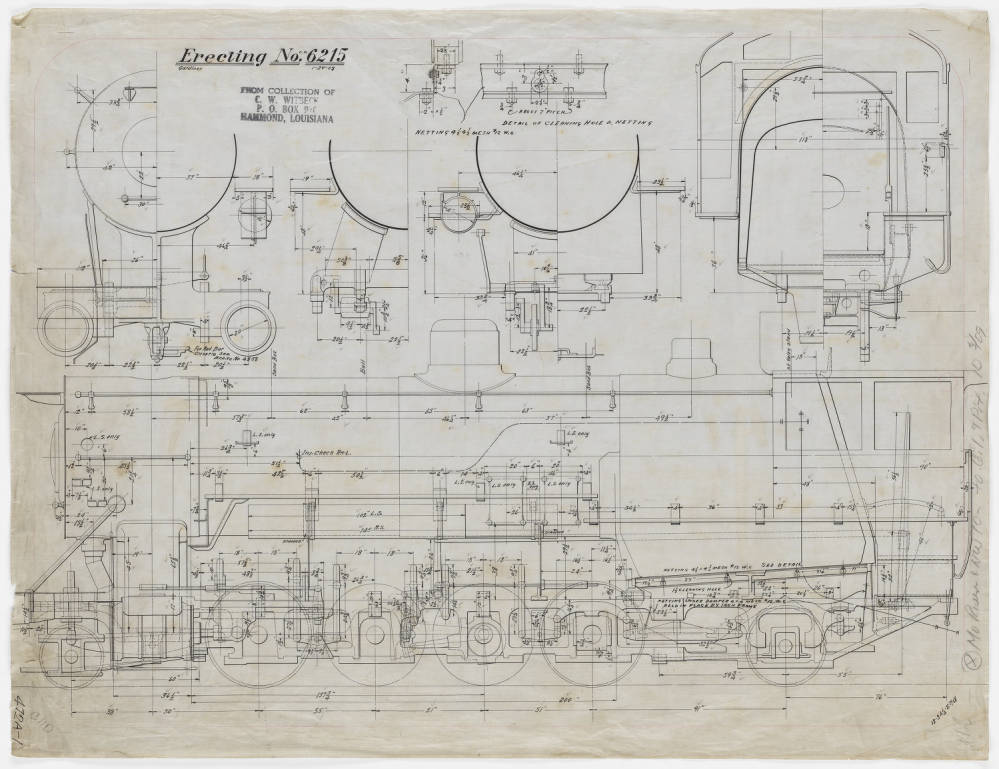The Gilmore and Pittsburgh Railroad was a short-line standard-gauge railway that operated between Idaho and Montana, serving as a critical transportation link for the region’s booming mining industry. Built primarily to transport lead, silver, and gold ore from remote mines in the Gilmore mining district, the railroad connected to the main line of the Union Pacific at Armstead, Montana. From there, ore was shipped to smelters and mills for processing.
Building the Line
The idea for the railroad emerged in the early 20th century when transporting heavy ore via wagon roads over rough terrain was both slow and costly. Construction of the railroad began in 1909 and was completed in 1910, with a total length of about 118 miles. Despite common misconceptions, the line was built to standard gauge (4′ 8½″) rather than narrow gauge, allowing easier interchange with existing rail networks.
The terrain posed numerous challenges. The line had grades as steep as 4%, requiring powerful locomotives and skilled crews to navigate sharp curves, switchbacks, and high mountain passes—especially Bannock Pass near the Idaho-Montana border.
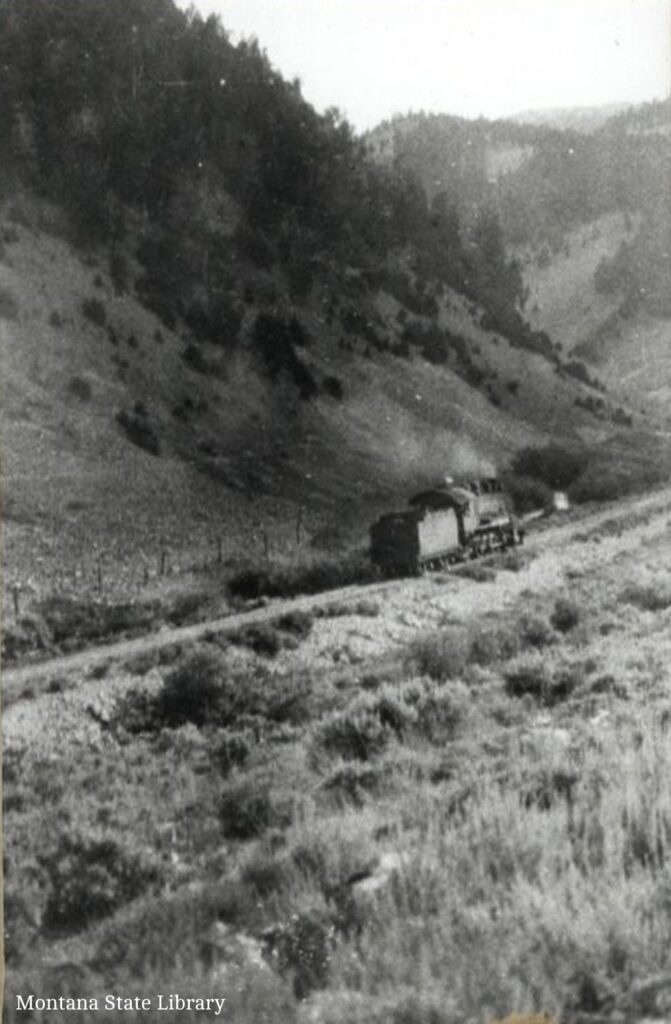
🛠️ W. A. McCutcheon: Visionary Behind the Gilmore and Pittsburgh Railroad
A central figure in the creation and success of the Gilmore and Pittsburgh Railroad was William Alexander McCutcheon, a seasoned mining engineer, businessman, and community leader who helped shape the development of central Idaho in the early 20th century. Born in 1855 in Iowa and raised in Missouri, McCutcheon grew up during a time of westward expansion and industrial growth. His early exposure to engineering and resource extraction industries sparked an interest that would carry him across the western United States.
By the 1880s and 1890s, McCutcheon had already gained significant experience working in the mining districts of Colorado and Wyoming, honing both technical and managerial skills in some of the West’s most challenging environments. Around the early 1890s, he relocated to Idaho, drawn by the opportunities in the Lemhi Range and Salmon River country—regions rich in silver, lead, and gold, but isolated by difficult terrain and poor infrastructure.
McCutcheon quickly became a prominent figure in Idaho’s mining community. As both a consulting engineer and mine manager, he was deeply involved in prospecting and operations in the Gilmore, Leadore, and Lemhi mining districts. He recognized early on that the region’s economic potential was being severely hindered by the lack of reliable transportation. Ore had to be hauled by wagon over rugged mountain roads, making large-scale production inefficient and costly.
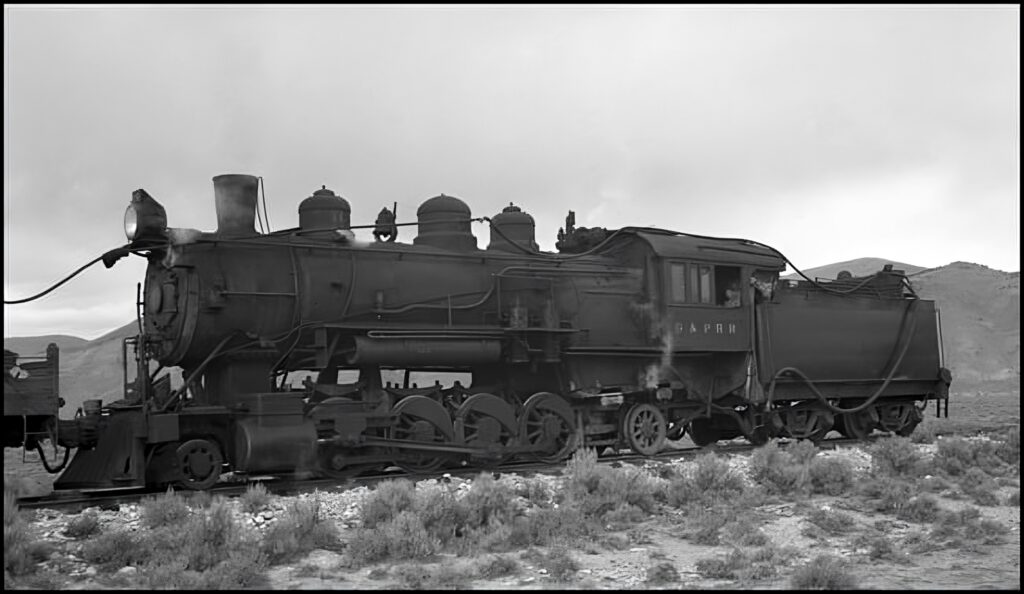
Determined to change this, McCutcheon spearheaded efforts to construct a railroad that would connect the mines in Gilmore to the national rail network at Armstead, Montana. In 1909, he formally helped organize the Gilmore and Pittsburgh Railroad Company, securing investment from regional businessmen and outside interests. As general manager and chief promoter, McCutcheon oversaw both the logistical and financial challenges of building a standard-gauge railroad across rugged, high-altitude terrain—including the formidable Bannock Pass.
Later in life, McCutcheon turned his attention toward public service. He served as mayor of Salmon, Idaho, where he championed civic improvements and continued advocating for economic development. Known for his practical thinking, entrepreneurial drive, and community-minded spirit, McCutcheon left a lasting legacy in both the business and civic sectors of Lemhi County.
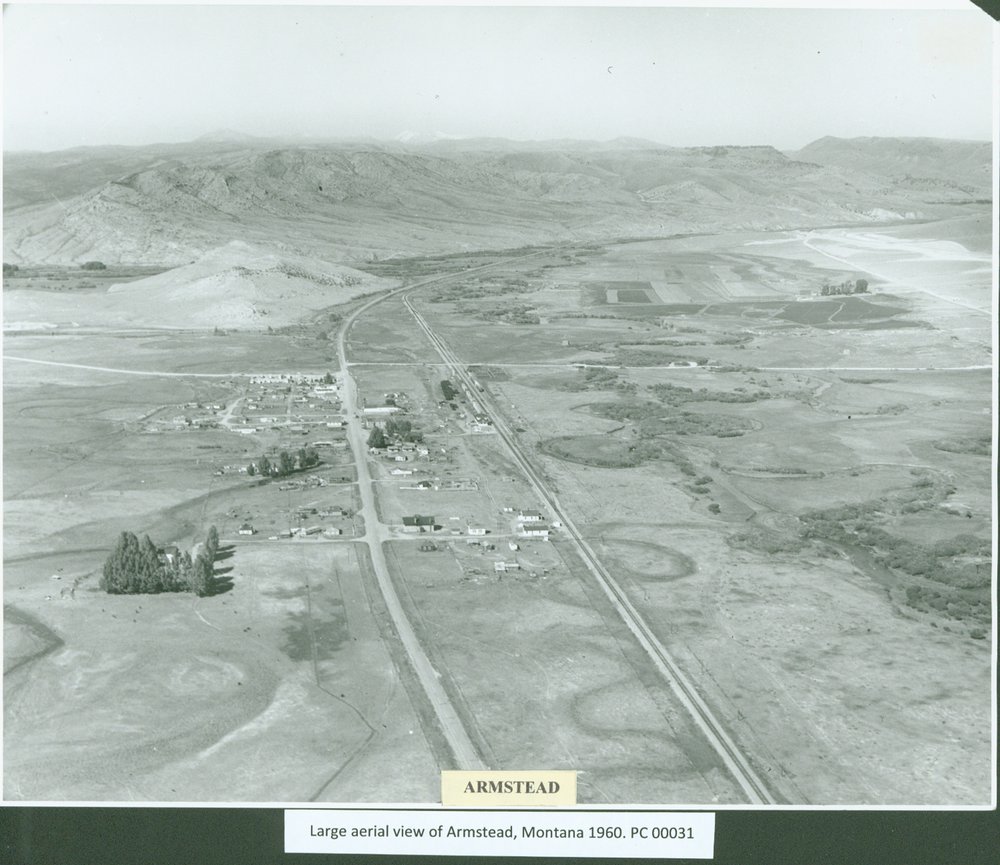
He passed away in 1930 at the age of 75, but his vision lives on. Though the railroad he built no longer runs, it helped lay the foundation for growth in one of Idaho’s most remote and challenging regions. To this day, W. A. McCutcheon is remembered as a pioneer of infrastructure and a driving force behind the modernization of central Idaho during the mining boom.
Economic Impact
During its peak years, the Gilmore and Pittsburgh Railroad hauled thousands of tons of ore annually. The line fostered the growth of towns like Leadore, Idaho, and brought jobs and commerce to a remote and rugged region. It was not just a conduit for ore but a lifeline for communities, moving mail, freight, and passengers through the Lemhi Valley and beyond.
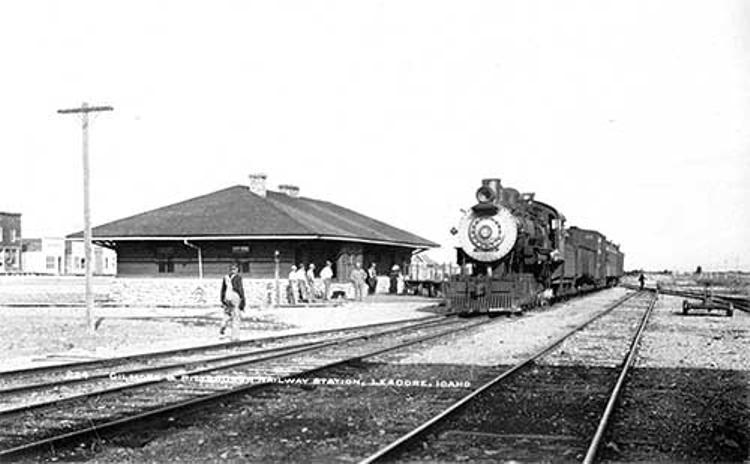
Decline and Dismantling
The prosperity didn’t last. By the 1920s, the Gilmore and Pittsburgh Railroad began to face mounting challenges. Ore production in the Gilmore and Leadore mining districts declined sharply as many of the richest veins had been worked out, leaving behind lower-grade ore that was less economical to extract. Simultaneously, the prices of silver, lead, and other metals dropped on national and international markets, making it harder for the mines—and by extension the railroad—to remain profitable. Labor unrest, including strikes and workforce shortages, further hampered mining operations and shipments.
Compounding these economic difficulties was a natural disaster: a severe flood struck the region and washed out multiple sections of the railway, damaging bridges, culverts, and embankments. Although the company made repairs to restore limited service, the railroad never fully recovered its pre-flood traffic levels. Maintaining the infrastructure across the remote and mountainous terrain was costly, and the return on investment dwindled year after year.
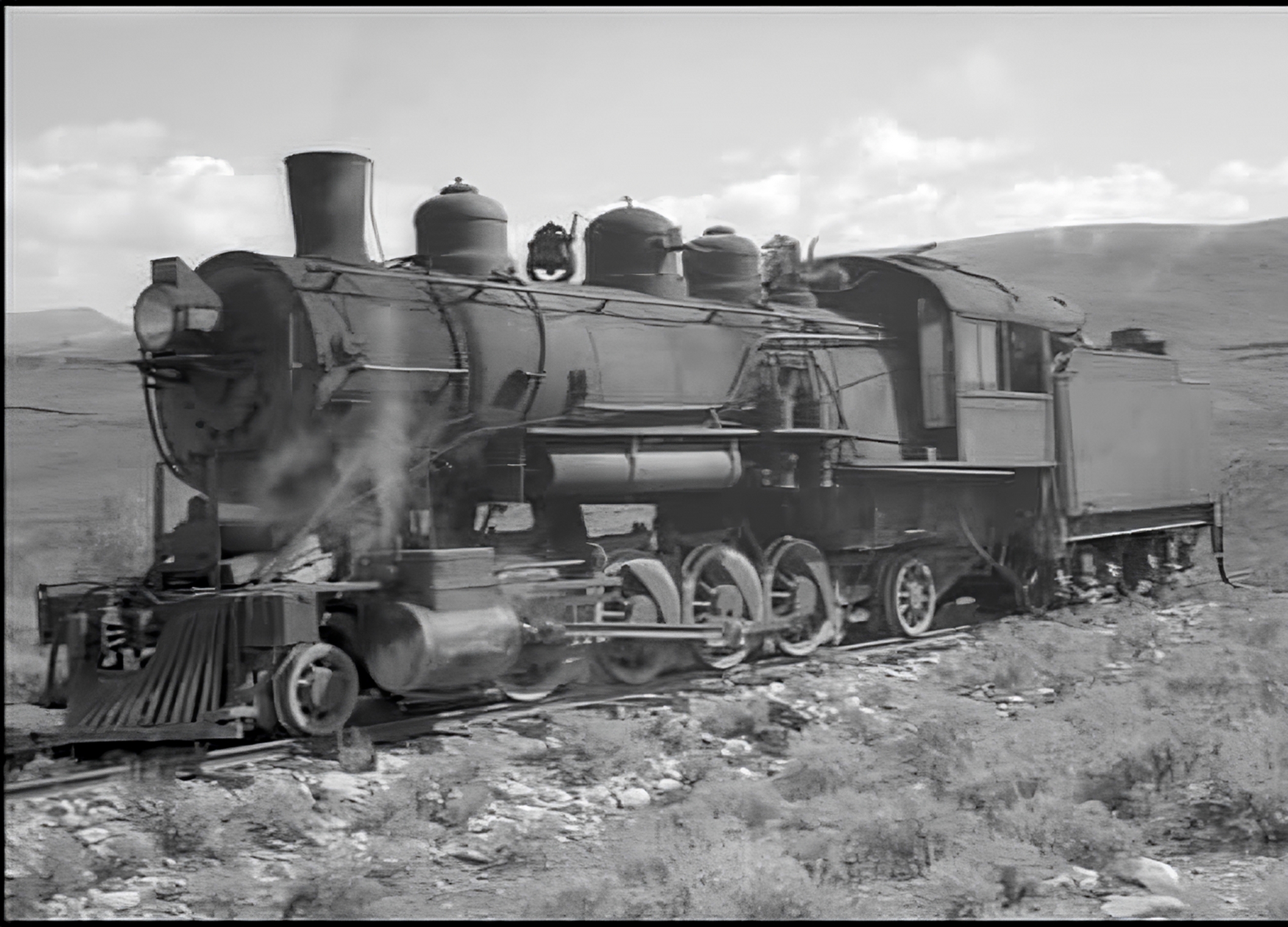
The situation worsened with the onset of the Great Depression in the 1930s. Demand for metal ores plummeted as industrial activity contracted across the country. Mines closed, businesses folded, and with fewer goods to transport, the railroad’s financial condition deteriorated rapidly. Efforts to cut expenses and attract new freight proved insufficient.
By 1940, with mine production virtually halted and no meaningful freight or passenger traffic to sustain it, the Gilmore and Pittsburgh Railroad ceased operations. The company filed for abandonment, and the tracks were dismantled and sold for scrap metal—ironically one of the few remaining commodities with any market value at the time. Rolling stock was either scrapped or sold off, and depots and equipment were left to decay or were repurposed locally.
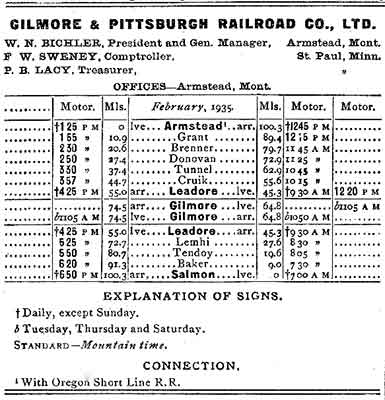
The closure marked the end of an era not just for the railroad, but for the once-bustling mining towns it had supported. Communities that had thrived along the line began to shrink or disappear altogether, their economies having relied almost entirely on mining and the transportation lifeline the railroad had provided.
Legacy
Although it operated for only a few decades, the Gilmore and Pittsburgh Railroad played a pivotal role in the mining and settlement of central Idaho. Its story is a window into the grit, ambition, and industrial optimism of the early 20th-century American West.

Sources:
The Gilmore & Pittsburgh Railroad. FRRandP.com. https://www.frrandp.com/2020/12/the-gilmore-pittsburgh-railroad.html
Gilmore and Pittsburgh Railroad. Wikipedia. https://en.wikipedia.org/wiki/Gilmore_and_Pittsburgh_Railroad
Idaho State Historical Society. Gilmore and Pittsburgh Railroad. Reference Series No. 215. https://history.idaho.gov/wp-content/uploads/0215.pdf
Proulx, Bernadine. Early History of the Upper Lemhi Valley. Archive.org. https://archive.org/stream/earlyhistoryofup00prou/earlyhistoryofup00prou_djvu.txt
Waite, Thornton. Get Off and Push: The Story of the Gilmore & Pittsburgh Railroad. University of Idaho Library. https://www.lib.uidaho.edu/idahobibliography/items/ibp1116.html
